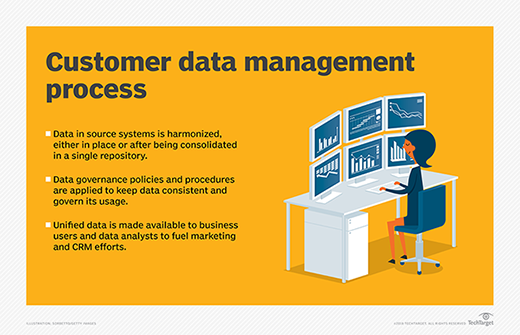
Sergej Khackimullin - Fotolia
Organization and automation ease data preparation process
By laying down proper groundwork and investing in automated checks, companies can ease the data preparation process and ensure they are getting the most out of their data.
Gathering and preparing data has become crucial to business operations in all industries. This process can be time-consuming, however, and mishandling data can lead to poor analytics and poor ROI. Going through the data preparation process the right way is therefore crucial.
Sometimes tedious and often complex, data preparation sits across multiple teams within an organization, from customer integrations to engineering. These teams often require different data in their daily operations, and it is important to prepare this wide range of data in an effective and manageable way.
Investing in data preparation can improve the quality of your data outcomes and put all teams in a position to succeed. Innovation in these areas is only as strong as the data that feeds it. To ease the data preparation process, follow these steps and make it much smoother.
Lay the groundwork
Oftentimes data scientists can be bogged down in locating and cleaning data rather than analyzing it. And without proper groundwork laid, the time and work invested become a waste. Approach the problem with the mindset that the more care and time invested at the beginning, the better the outcome will be.
"To reduce the stress of data preparation, invest time upfront to get it right, test extensively and schedule monitoring on an ongoing basis," said Raigon Jolly, head of analytics and data science at TrafficGuard.
Data preparation is at its most stressful when companies find that there is a need to retrofit it. Discovering that your data output is unreliable because of poor data quality or bad preparation can be frustrating for everyone involved. Even the best analytics or machine learning programs can't save you if the data preparation process has been poor.

Data collection is the foundation an effective data analysis is built on. Data preparation can therefore be eased with an investment of time and resources into the quality of data. Make sure you are collecting the correct data the correct way and that it is applicable to your end goal.
Understand what you require of data and make sure you are receiving all the right signals from various external and internal sources. Identify your specific challenges and expand the input with historical data or third-party sources to help solve them.
This initial investment can reduce the chance of poor analytics and results from processed data.
Document your data
Once there is an understanding that the gathered data is right for the job, documentation and categorization should be used. Order and discipline can ease the data preparation process by eliminating confusion.
"Prepare a data dictionary to standardize your data assets company-wide, covering schema requirements, null handling and defaults," Jolly said. "Capture data lineage -- what solutions and processes consume which data."
This data dictionary helps to sort and define the value of the data and can make it easier to understand where this data will be most useful. Creating a quick reference point for your company can save time in an already intensive process and further aid the analytics process that follows data preparation.
By increasing labeling and documentation, you decrease the risk of wasting time through having data sent where it is not useful. Make sure to define and document your data flow and process flow, in order to better understand where your data is coming from and where certain data can be most useful for your organization.
Safeguard against human error
Part of the stress associated with the data preparation process finds its source in uncertainty. Building in checkpoints when preparing the data -- and analyzing it -- can ease the tension.
Understand that data comes from many sources and in many forms. Checking to make sure that the data is prepared and sorted correctly is crucial because of its complexity. This step can be eased with a mix of manual work and automation.
"Establish a strong automated process for reconciliation and checks. Even an end-of-day email summary report helps," Jolly said.
Having an automated system look through data before, during and after the data preparation process can reduce risk and save time for companies.
Make sure in all this that there is data transparency as well. Not only will this reduce issues that can follow the data preparation process, like governmental regulations and restrictions as well as privacy laws, but it can give the business a better understanding of what they are tracking and gathering.
"Invest in real-time data transparency using solutions to help identify data quality issues early," Jolly said. This can save time and stress down the line.
The data preparation process is one that can set companies up to succeed and, by laying down the right foundation, can be a true asset.




